-Contributed by Nicole Dunlap.
While the CCHP (Cummings Center for the History of Psychology) library continues to grow with over 20,000 volumes from philosophy and mathematics to biographies and English literature, there remain a handful of particularly significant antiquarian books in need of repair. These tomes are significant not only because of their relevance to the history of psychology but also for their rarity and representation of earlier book printing and binding methods. Read on to learn more about the contents, condition, and curiosities of the books in the CCHP library/
We have noted what is interesting and unique about each book and what repairs are needed in the hope that these at-risk volumes can be restored to their former glory and will be available for study in the decades to come.
- Title: Erasmus Darwin (1794-1796). Zoonomia; or the laws of organic life. London: Printed for J. J. Johnson.
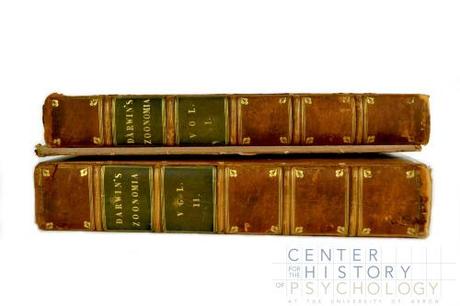
Description: This second edition of the two-volume classic work by Erasmus Darwin, grandfather of Charles Darwin, contains some of the earliest ideas on what would come to be known as evolutionary theory. Here, the elder Darwin speculates that all warm-blooded animals may have arisen from “one living filament.” The work also contains a catalog of diseases and treatments, as well as ideas regarding important topics such as habit, imitation, and mental development.
Physical Characteristics:
- Volume I has 582 pages; Volume II has772 pages
- Illuminated cover (etched in gold print)
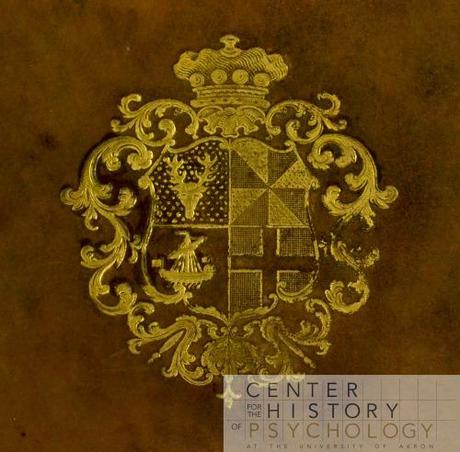
- Unique stamps throughout Volume I text that appear to be watercolor
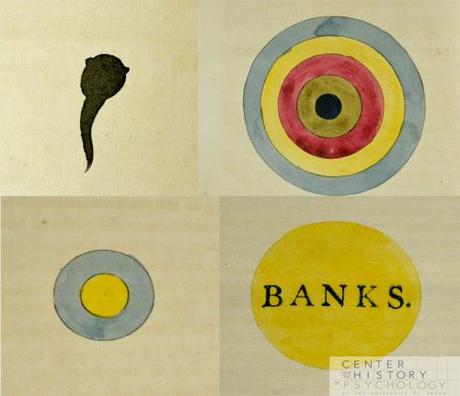
- Front and back covers are detached on Volume I
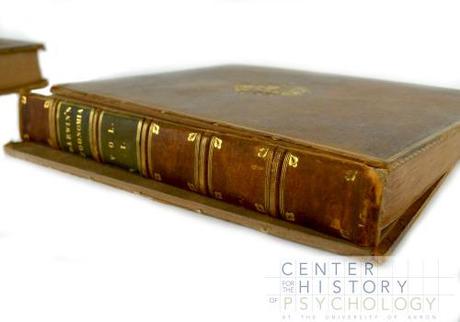
- Front cover is detached on Volume II
- Interesting inscription at the end of Volume II that reads: “The work is done!—Nor Folly’s active rage, Nor envy’s self, shall blot the golden page; Time shall admire, his mellowing touch employ, and mend the immortal tablet, not destroy.”
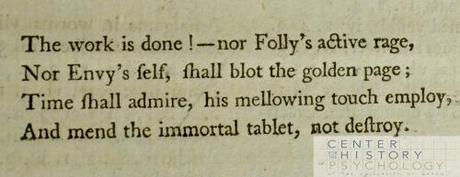
Treatment: Reattach front boards, reinforce back boards, consolidate corners of boards, clamshell boxes.
- Title: Pierre Bayle (1730). Dictionaire historique et critique, Avec la vie de l’auteur, par Mr. Des Maizeaux. Amsterdam: P. Brunel.
Description: This fourth edition of Bayle’s celebrated, four-volume biographical dictionary influenced the work of many important Enlightenment philosophers, including David Hume and George Berkeley. The dictionary includes lengthy discussions of everything from sorcery and Spinoza to vanity and virtue.
Treatment: Lift pastedowns and leather on boards, sew new thread through raised cords with extra on either end to lace through boards, lift spine leather alongside joint one section in to attach joint reinforcement paper, remove thickness from boards to accommodate joint paper and secure paper to both front and back of boards, reattach all lifted materials, attach toned Japanese paper to reinforce cover leather from outside. Endband/endcap choices: Rebuild endcaps and recreate endbands or reinforce and reattach existing endbands only. Clamshell box choices: regular clamshell or clamshell with built in cradle system.
- Title: Joseph. W. Haddock (1851). Somnolism and Psycheism, or, The science of the soul and the phenomena of nervation, as revealed by vital magnetism or mesmerism, considered physiologically and philosophically with notes of mesmeric and psychical experience. London: J. S. Hodson.
Description: This volume documents two early lectures on clairvoyance and spiritualism delivered by a well-known English physician, Joseph W. Haddock. The lectures outline Haddock’s experiences with his servant, Emma, who would frequently fall into trances accompanied by clairvoyance. Emma’s supposed abilities were used in attempts to catch local criminals as well as in the search for the lost crew of Sir John Franklin’s expedition to the Northwest Passage.
Physical Characteristics:
- 232 pages
- Illuminated cover
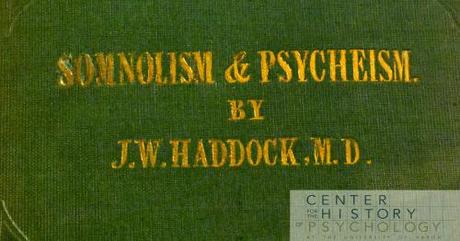
- Front cover is detached
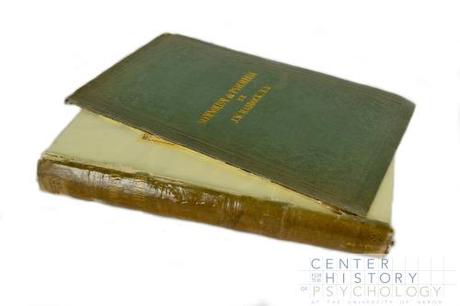
Treatment: Reduce adhesive on spine/covers to extent possible, rebuild and reattach case, mend fold out, reinforce inner joints, 4-flap enclosure.
- Title: Jean Belot (1640). Les Oeuvres de M. Jean Belot, curé de Mil-Monts, Professeur aux Sciences Divines & Celestes. Contenant la Chiromence, Physionomie, l’Art de Memoire de Raymond Lulle, Traicté des Divinations, Augures et Songes; les Sciences Steganographiques, Paulines, Arnadelles & Lullistes, l’Art de doctement Precher & Haranguer, &c. Rouen: Jacques Cailloué.
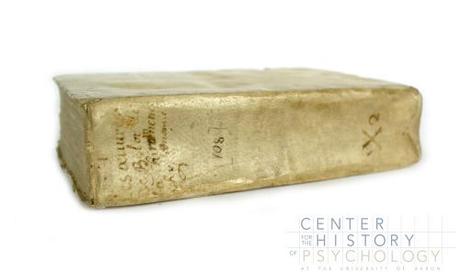
Description. This early work by French author Jean Belot serves as an example of early seventeenth pseudoscientific traditions including palmistry, physiognomy, and astrology.
Physical Characteristics:
- 432 pages in the first text; 138 pages in the second text
- Possible vellum (calfskin) binding
- Binding is beginning to pull away from pages
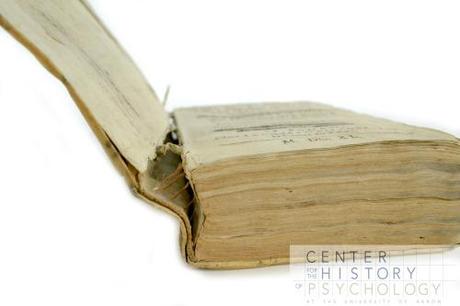
- Error in page numbering; the numbers go from 392 to 293 to 394
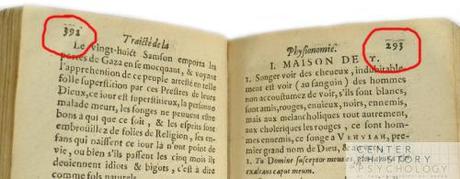
- Text blotted out with ink on the title page
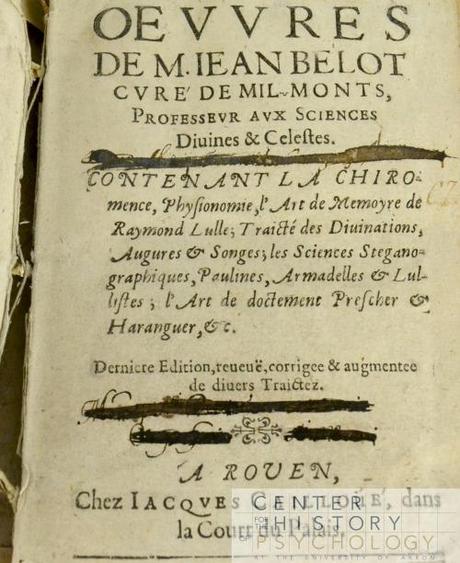
Treatment: Mend pages, reinforce inner joints, 4-flap enclosure.
- Title: Walkington, Thomas (ca. 1631). The optick glasse of humors, or, The touchstone of a golden temperature, or, The philosophers stone to make a golden temper : wherein the foure complections, sanguine, cholericke, phligmaticke, melancholicke are succinctly painted forth, and their externall intimates laid open to the purblind eye of ignorance itselfe, by which euery one may iudge of what complection he is, and answerably learne what is most sutable [sic] to his nature. Oxford: Printed by W. T.
Description. Written by English clergyman Thomas Walkington, this slim volume is considered to be a forerunner of Burton’s famous Anatomy of Melancholy. Here, Walkington describes the four “complexions” or temperaments associated with the four humors: sanguine, choleric, melancholic, and phlegmatic. This rare undated edition is thought to have been printed around 1631.
Physical Characteristics:
- 168 pages
- Very small in size
- Soft binding; possibly vellum.
- Binding is pulling away from pages
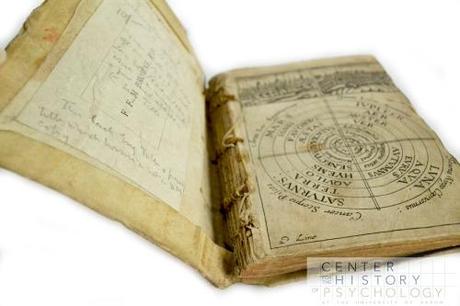
- Hole in back cover
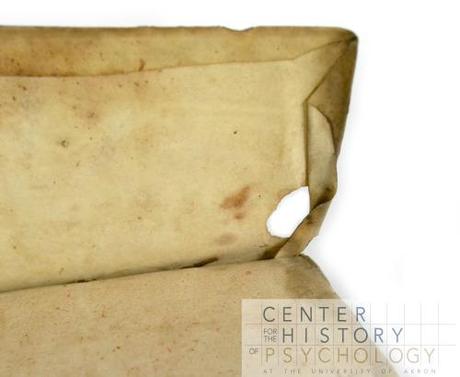
- Marginal notations throughout text
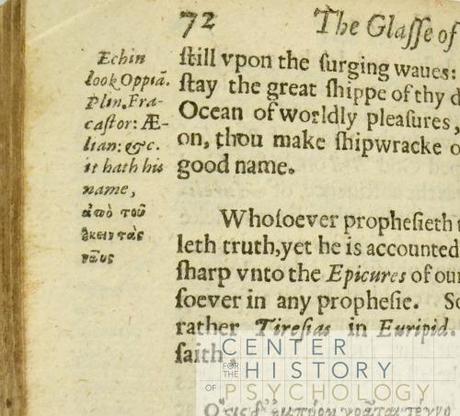
Treatment: Mend pages, 4-flap enclosure.
- Title: Bernard de Mandeville (1730). A treatise of the hypochondriack and hysterick diseases : In three dialogues. London: Printed for J. Tonson.
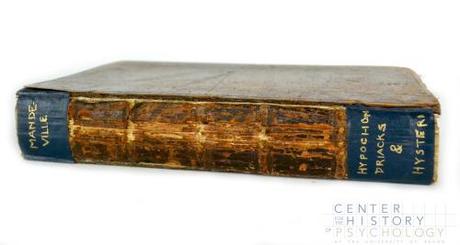
Description. In this volume, Mandeville, a Dutch physician, describes his struggle with melancholy. The work, written as three dialogues between a physician and a male patient, presents a unique look at eighteenth-century views on mental illness, male hysteria, and what would come to be known as the “talking cure.” Scholars view this volume as significant in initiating a number of eighteenth-century British works on nervous diseases.
Physical Characteristics:
- 380 pages
- Spine is eroding
- Pages are falling out
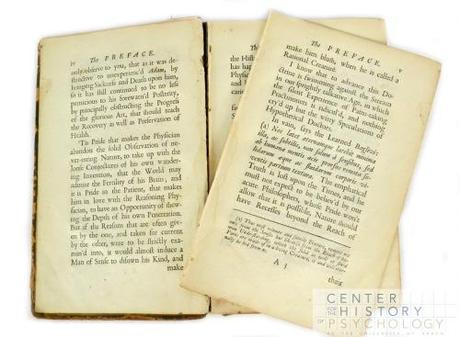
- Interesting illustration at end of text
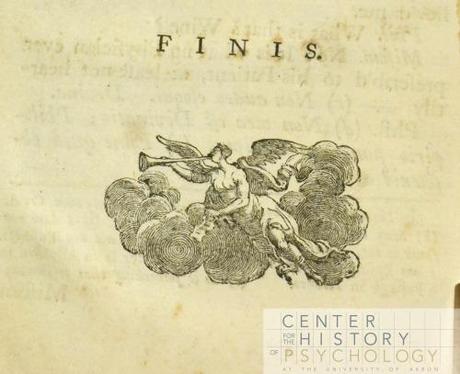
Treatment: Full rebinding (not original covers) – remove existing covers and spine leather, remove existing sewing, mend pages, find replacement/insert blank sheet for missing page 81/82, guard and rebuild textblock, resew and rebind in calf skin, 4-flap enclosure.
- Title: Marshall Hall (1836). Lectures on the Nervous System and Its Diseases. Philadelphia: Carey & Hart.
Description. In this early work on physiology and clinical neurology, physiologist Marshall Hall introduced terms that would come to dominate psychology and physiology including “arc” and “reflex action”. The volume was published in both the United States and London in 1836; this is the first American edition.
Physical Characteristics:
- 240 pages
- Front and back covers are detached
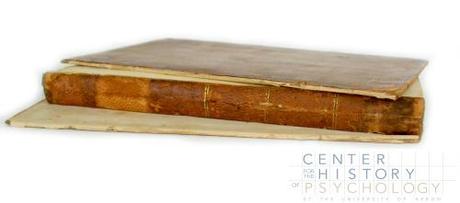
- Spine is eroding
Treatment: Remove spine and save if possible, clean and reline spine, build new spine piece (reattach original if possible), reattach covers, 4-flap enclosure.
- Title: George Cheyne (1734). The English malady, or, A treatise of nervous diseases of all kinds, as spleen, vapours, lowness of spirits, hypochondriacal, and hysterical distempers, &c. In three parts. London: Printed for G. Strahan and J. Leake at Bath.
Description. This popular eighteenth-century work by a Scottish physician outlines the author’s struggle with his own nervous illness. Here, Cheyne wrote of hypochondria and hysteria as diseases of the elite classes and the highly intelligent, resulting from a sensitive nervous system or delicate constitution. He made extensive recommendations about diet, exercise, and environment as a cure for such nervous illnesses. The work was first published in 1733 and went through six editions in 6 years. This rare volume is the fourth edition, published in 1734.
Physical Characteristics:
- 370 pages
- Front cover detached and back cover becoming detached
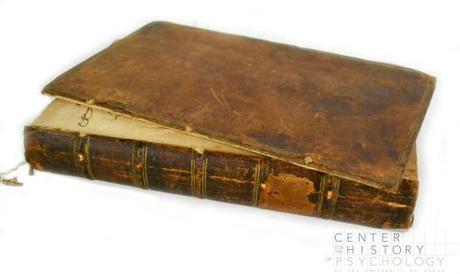
- Stamp on inside front cover
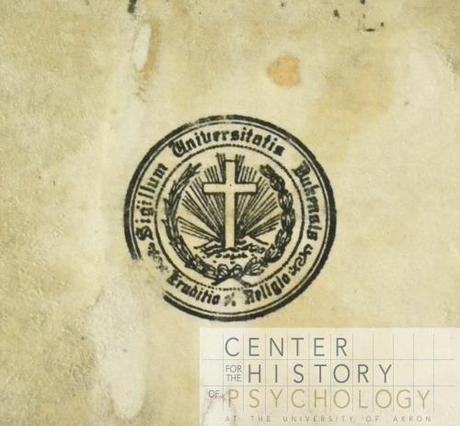
- Signature on first page

- Handwritten name and date on pages 1 and 212; this could be possible evidence of provenance (information about previous owners)
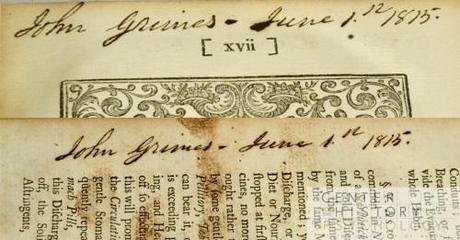
Treatment: Reattach flyleaf, reinforce preferential opening in textblock, reattach front cover, reinforce back cover, 4-flap enclosure.
